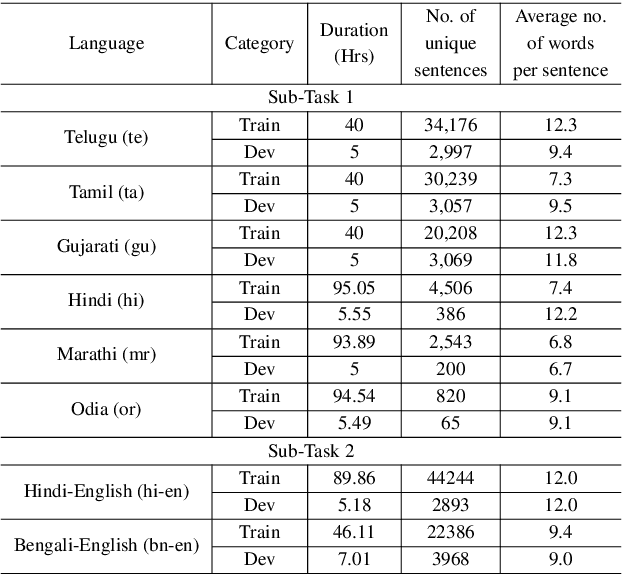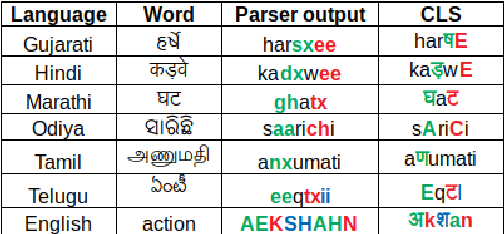Hema Murthy
Technology Pipeline for Large Scale Cross-Lingual Dubbing of Lecture Videos into Multiple Indian Languages
Nov 01, 2022

Abstract:Cross-lingual dubbing of lecture videos requires the transcription of the original audio, correction and removal of disfluencies, domain term discovery, text-to-text translation into the target language, chunking of text using target language rhythm, text-to-speech synthesis followed by isochronous lipsyncing to the original video. This task becomes challenging when the source and target languages belong to different language families, resulting in differences in generated audio duration. This is further compounded by the original speaker's rhythm, especially for extempore speech. This paper describes the challenges in regenerating English lecture videos in Indian languages semi-automatically. A prototype is developed for dubbing lectures into 9 Indian languages. A mean-opinion-score (MOS) is obtained for two languages, Hindi and Tamil, on two different courses. The output video is compared with the original video in terms of MOS (1-5) and lip synchronisation with scores of 4.09 and 3.74, respectively. The human effort also reduces by 75%.
Dual Script E2E framework for Multilingual and Code-Switching ASR
Jun 02, 2021



Abstract:India is home to multiple languages, and training automatic speech recognition (ASR) systems for languages is challenging. Over time, each language has adopted words from other languages, such as English, leading to code-mixing. Most Indian languages also have their own unique scripts, which poses a major limitation in training multilingual and code-switching ASR systems. Inspired by results in text-to-speech synthesis, in this work, we use an in-house rule-based phoneme-level common label set (CLS) representation to train multilingual and code-switching ASR for Indian languages. We propose two end-to-end (E2E) ASR systems. In the first system, the E2E model is trained on the CLS representation, and we use a novel data-driven back-end to recover the native language script. In the second system, we propose a modification to the E2E model, wherein the CLS representation and the native language characters are used simultaneously for training. We show our results on the multilingual and code-switching tasks of the Indic ASR Challenge 2021. Our best results achieve 6% and 5% improvement (approx) in word error rate over the baseline system for the multilingual and code-switching tasks, respectively, on the challenge development data.
 Add to Chrome
Add to Chrome Add to Firefox
Add to Firefox Add to Edge
Add to Edge